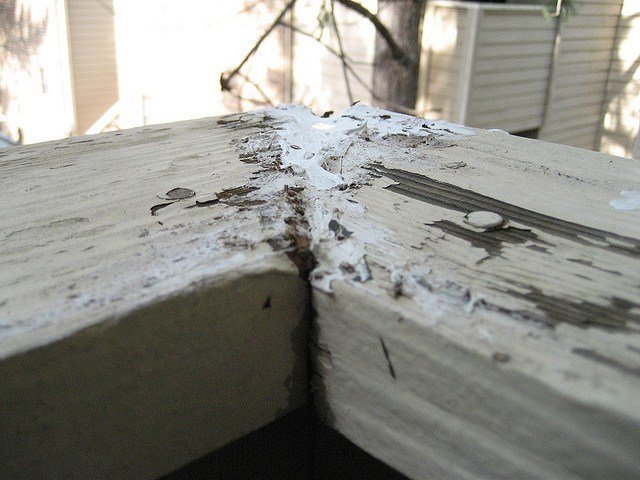Like all wood products, plywood is subject to decay. This decay is usually caused by wood-eating fungi, which are activated by water. Wood can also rot due to wood-eating insects getting inside the walls of a home. Regardless of the cause, the rotting weakens the structure and must be repaired as soon as you become aware.

There are two basic ways of repairing rotten plywood: replacing or treating it with epoxy-based compounds. The decision usually comes down to cost, with larger repairs requiring replacement rather than repair. The first thing to do is identify the damage’s extent and source. With rot caused by fungi, this means finding the source of the water, which makes it possible for them to eat the wood, not the fungi itself. Without moisture, the fungi become dormant and will not damage the wood. Remember that water may enter the structure far from where it causes damage. Water can run down roof trusses or other members for a considerable distance once it gains access to the home.
Repairing Large Damaged Areas
The entire area of the damage will need to be exposed for large damaged areas. This may require the removal of siding or roof shingles. Be sure to find the full extent of the damage so it can all be replaced. Plywood replaced in this manner must be cut so that the edges can be attached to roof trusses or studs in the walls.
Take care in removing roofing shingles or siding to expose the damage. You will want to reuse these, so your home looks consistent when the repair is finished. Pry the edge around the nail, pulling the nail free of the shingle or siding. By avoiding ripping or breaking the materials, you can reattach them.
Once the damaged area is revealed, it can be cut out and a new piece cut to replace it. Be sure to use the same thickness of new material as that being removed so that the siding or roofing can sit flat.
Repairing Small Damaged Areas
The edges of the plywood are especially susceptible to rotting, as the water will wick up the end grain of the wood. Therefore, it is not unusual to repair the edges of plywood structures, even though the rest is in good shape. In this case, it is necessary to remove any paint and sealer applied to the wood so that the wood itself is exposed. Repair is accomplished through the use of epoxy penetrants and epoxy fillers. Epoxy penetrants are two-part low-viscosity epoxies formulated for maximum penetration. They have a long working time, allowing them to be brushed and rolled into all the crevices of the wood. They will wick into any open pores, cracks, or fissures from there, coating the exposed wood.
This seals and strengthens the wood, actually making it stronger than it originally was. Once the epoxy penetrant has been applied and cured, epoxy fillers can be used to restore any rotted-away areas of the wood, returning the appearance to new. This is especially useful in areas where ends of the plywood have rotten away, leaving gaps between pieces of on edge. The filler also works as an adhesive, connecting additional pieces of wood.
Finishing the Repair
In either case, it is important to properly finish the repaired structure by reapplying shingles or painting the structure. The purpose of painting in architecture is not to provide beauty but to provide a waterproof covering for the materials used. As a waterproof coating, it is important to apply enough paint or coatings to fill the surface totally.




